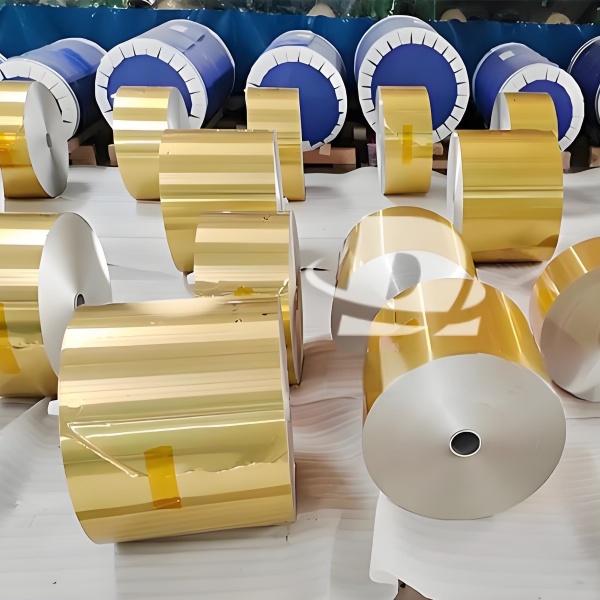 Large Rolls Of Aluminium Foil Factor
Large Rolls Of Aluminium Foil Factor
Aluminium foil factory In double foil production, the rolling of aluminum foil is divided into three processes: rough rolling, intermediate rolling, and finishing rolling. From the technological point of view, it can be roughly divided from the thickness of the rolling exit. The general method is that the thickness of the export rough rolling is greater than or equal to 0.05mm, the exit thickness of the intermediate rolling is between 0.013-0.05, and the single plate and double-rolled products with an exit thickness of less than 0.013mm are finished rolling. Its characteristics mainly include the following aspects:
- Aluminum strip rolling. To make the aluminum strip thinner mainly depends on the rolling force, so the automatic plate thickness control method is the constant roll gap as the main control method of the AGC. Even if the rolling force changes, the roll gap can be adjusted at any time to keep the roll gap at a certain value to obtain the thickness. Consistent plate and strip. When aluminum foil is rolled to medium-finish rolling, due to the extremely thin thickness of aluminum foil, increasing the rolling force during rolling makes it easier for the roll to produce elastic deformation than the material being rolled. The elastic flattening of the roll is not possible. Ignored, the elastic rolling and flattening of the rolls determines that in aluminum foil rolling, the rolling force can no longer play the same role as the rolled sheet. Aluminum foil rolling is generally roll-free rolling under constant pressure conditions to adjust the thickness of the aluminum foil. Mainly depends on the adjusted tension and rolling speed.
- Stack scrolling. For ultra-thin aluminum foil with a thickness of less than 0.012mm (the thickness is related to the diameter of the work roll), it is difficult to use a single-sheet rolling method due to the elastic flattening of the rolls, so the double rolling method is adopted, that is, lubrication is added between the two aluminum foils. Oil, and then rolling them together (also called stack rolling) method. Stack rolling can not only produce ultra-thin aluminum foil that cannot be produced by a single rolling, but also can reduce the number of broken ends and improve labor productivity. Using this process, single-sided smooth aluminum foil from 0.006mm to 0.03mm can be mass-produced.
- Speed effect. In the aluminum foil rolling process, the thickness of the film varies with the degree of rolling.
Aluminum Foil In Jumbo Roll Suppliers also mentioned the use of waste aluminum foil





